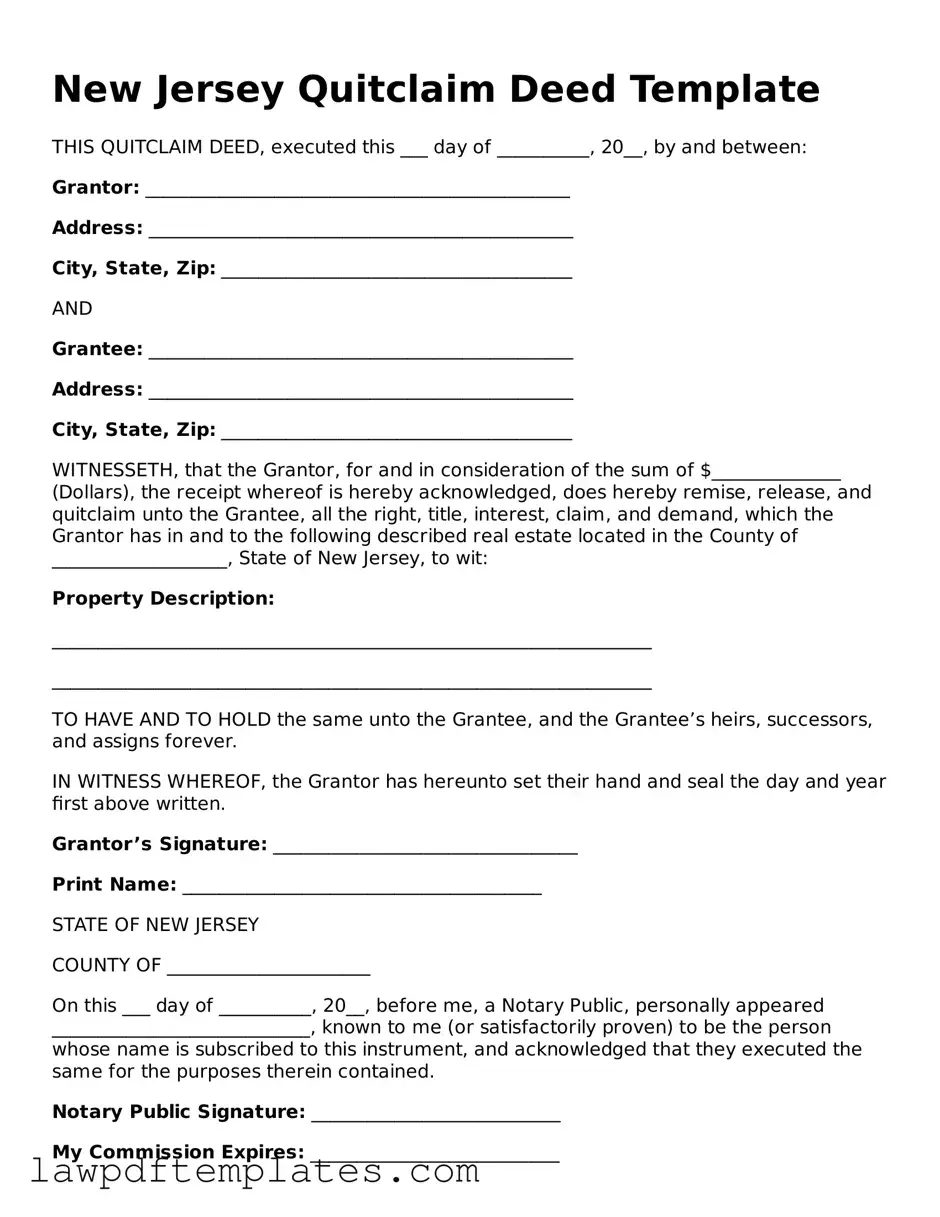New Jersey Quitclaim Deed Template
THIS QUITCLAIM DEED, executed this ___ day of __________, 20__, by and between:
Grantor: ______________________________________________
Address: ______________________________________________
City, State, Zip: ______________________________________
AND
Grantee: ______________________________________________
Address: ______________________________________________
City, State, Zip: ______________________________________
WITNESSETH, that the Grantor, for and in consideration of the sum of $______________ (Dollars), the receipt whereof is hereby acknowledged, does hereby remise, release, and quitclaim unto the Grantee, all the right, title, interest, claim, and demand, which the Grantor has in and to the following described real estate located in the County of ___________________, State of New Jersey, to wit:
Property Description:
_________________________________________________________________
_________________________________________________________________
TO HAVE AND TO HOLD the same unto the Grantee, and the Grantee’s heirs, successors, and assigns forever.
IN WITNESS WHEREOF, the Grantor has hereunto set their hand and seal the day and year first above written.
Grantor’s Signature: _________________________________
Print Name: _______________________________________
STATE OF NEW JERSEY
COUNTY OF ______________________
On this ___ day of __________, 20__, before me, a Notary Public, personally appeared ____________________________, known to me (or satisfactorily proven) to be the person whose name is subscribed to this instrument, and acknowledged that they executed the same for the purposes therein contained.
Notary Public Signature: ___________________________
My Commission Expires: ___________________________
INSTRUCTIONS:
- Fill in all blanks with the necessary information.
- Ensure that the deed is properly signed and notarized.
- Record the completed Quitclaim Deed with the appropriate county office.
